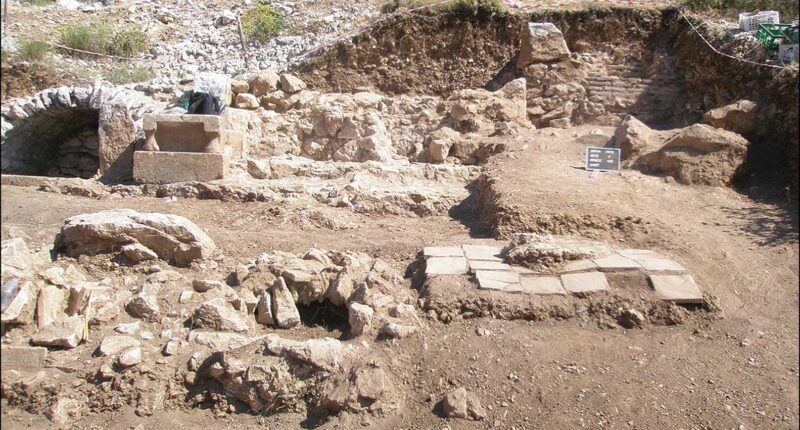A ROMAN tomb sealed around 2,000 years ago to lock in the “restless dead” has been opened in Turkey.
Archaeologists claim the ancient people who closed the tomb left intentionally bent nails on the ground and sealed it in a way that signified they feared the person inside would haunt them.
A study led by first author Johan Claeys has been published in the journal Antiquity.
It contains detailed descriptions of the spooky tomb and what it could mean.
“In this specific context, the cremated human remains were not retrieved but buried in situ, surrounded by a scattering of intentionally bent nails, and carefully sealed beneath a raft of tiles and a layer of lime.
“For each of these practices, textual and archaeological parallels can be found elsewhere in the ancient Mediterranean world, collectively suggesting that magical beliefs were at work,” the researchers wrote.
The tomb was found at an archaeological site called Sagalassos that’s located in southwestern Turkey.
It dates back to around 100-150 A.D.
The researchers were surprised to find 41 bent nails placed around cremated remains within the tomb.
Bricks had been placed on top of the cremation pyre and then plaster was put on top of that.
Most read in News Tech
All of this is thought to have been done as the ancient Romans feared the “restless dead” soul of the adult male they were burying.
Claeys, an archaeologist at Catholic University Leuven in Belgium, told Live Science: “The burial was closed off with not one, not two, but three different ways that can be understood as attempts to shield the living from the dead — or the other way around.”
He added that the site implies a fear of the “restless dead.”
Other grave goods uncovered suggest the man who was buried was loved.
Clues of affection in the tomb include the remains of food, a coin and cermaic and glass vessels.
The researchers think the man was likely burried by family members in an uncovential way.
They think the attempts at some sort of magical ritual could have been an “impromptu response to perceived ‘unnatural’ disease and death.”
“The combination of nails and bricks designed to restrain the dead with the sealing effect of the lime strongly implies a fear of the restless dead.


“Regardless of whether the cause of death was traumatic, mysterious or potentially the result of a contagious illness or punishment, it appears to have left the dead intent on retaliation and the living fearful of the deceased’s return,” the researchers concluded.











